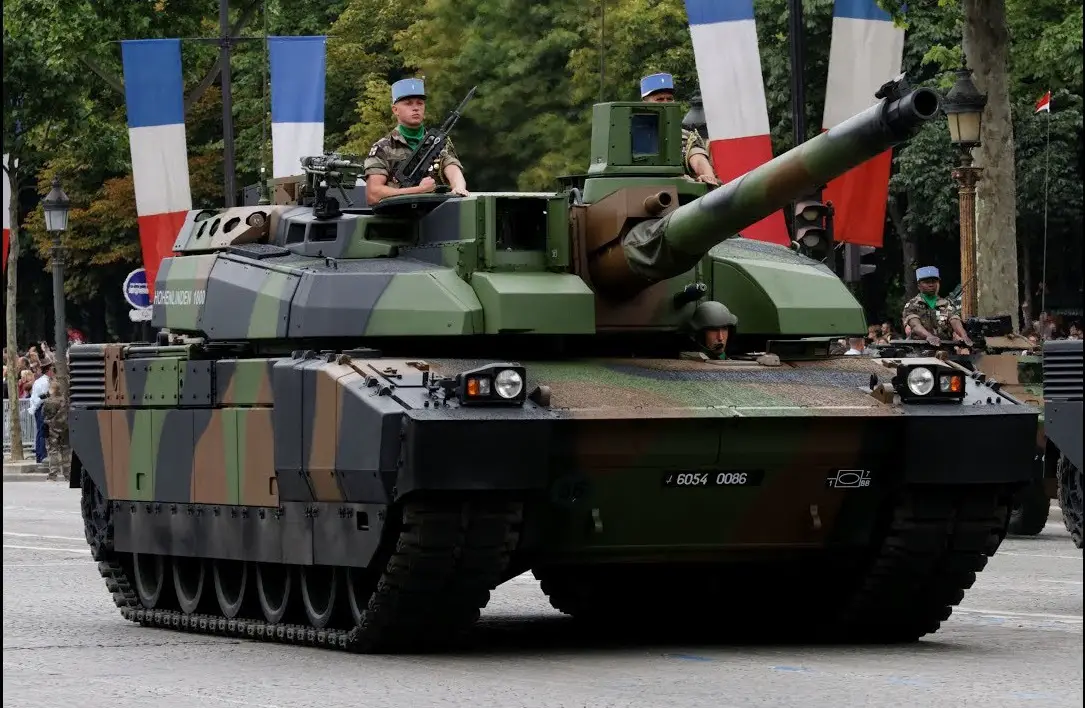In 1964, studies were initiated about a possible replacement vehicle for the AMX 30: the Engin Principal Prospectif. In 1971, in view of the inferiority of the AMX 30 in comparison to the new generation of Soviet tanks about to be introduced, the Direction des Armements Terrestres ordered the beginning of the Char Futur project. In 1975, a working committee was created that in 1977 agreed on a list of specifications. It was announced that a purely French battle tank would be developed, called “EPC” (Engin Principal de Combat). The importation of foreign equipment, like the M1 Abrams, the Leopard 2, or the Merkava, had been studied and rejected.

In contrast to most Western programmes of the time, much consideration was given to active, besides passive protection, to limit the overall mass of the vehicle. Mobility for evading enemy fire and fire control systems were given particular attention. Nevertheless, it was a stated design goal to achieve at least double the protection against KE-penetrators in comparison to the level attained in then current MBTs of the fifty ton weight class, the latter indicated at about 400 mm RHA equivalency, the higher level at the same time protecting against shaped charges. Partnership with a foreign state was sought to limit the cost per unit, and this was found when the United Arab Emirates ordered 436 vehicles, adding to the 426 units already planned for the French Army.

In 1986, the project was started under the name of “Leclerc”, six prototypes being built swiftly. Mass production started in 1990 with the four-unit Batch 1, used mainly for comparative tests in foreign countries. The 17 units of Batch 2 were shipped, with improvements in the turret and in the hull armour. Batches 4 and 5 were better built, eliminating the recurrent problems in the powerplant, and are still in service, after having been refitted at the end of the 1990s. The second series started with Batch 6, with an added climate control system in the right rear of the turret. Batch 7 introduced a transmission system to the command vehicle, and a data system giving instantaneous vision of the state of all battle tanks and acquired targets. Batch 8 was a modernisation of the electronic system, and Batch 9 replaced the thermal imaging ATHOS by a SAGEM Iris with better resolution.

The Leclerc is equipped with a GIAT (Nexter) CN120-26 120mm smoothbore cannon. This cannon is capable of firing the same NATO standard 120mm rounds as the German Leopard 2 and US M1 Abrams, but in practice only French-produced ammunition is issued. The gun is insulated with a thermal sleeve and has an automatic compressed-air fume extraction system instead of the usual bore evacuator. The Leclerc has a unique autoloading system which was specifically designed for it, and reduces the crew to three by eliminating the human loader. The Leclerc autoloader allows a rate of fire of 12 shots per minute and holds 22 rounds of ready ammunition; it can accommodate up to six different types of ammunition at once. The Leclerc has the GALIX combat vehicle protection system from GIAT, which fires a variety of smoke grenades and infra red screening rounds, as well as anti-personnel grenades.

The Leclerc has an eight-cylinder SACM (now Wärtsilä) V8X-1500 1,500 hp Hyperbar diesel engine and a Renk AG automatic transmission, with five forward and two reverse gears. The official maximum speed by road is 72 km/h and 55 km/h cross country (speeds in excess of 80 km/h were reported on road). The “hyperbar” system integrates a Turbomeca TM 307B gas turbine in the engine, acting both as a turbocharger and an APU giving auxiliary power to all systems when the main engine is shut down. In addition, with boost available even at idle, this arrangement also works as an anti-lag system. At a combat weight of just 56 tons, the Leclerc is one of the lighter main battle tanks in the world, though still considerably heavier than Soviet and later Russian designs; this gives it one of the best power-to-weight ratios among the Western tanks (27 hp per ton) and makes it one of the fastest MBTs of its generation (0 to 32 km/h in 5 seconds).

All previous batches will be modernised up to the standards of Batch 9 from 2005. In 2004, Batch 10 was presented, incorporating new information systems which could share the disposition of enemy and friendly units to all vehicles on the battlefield, and a new armor package. This was the beginning of the 96-unit third series. By 2007, 355 tanks should have been operational, 320 of them incorporated in four regiments, each of 80 Leclerc vehicles. With production now complete, the United Arab Emirates Army has 388. The price in 2011 was €9.3 million, which made it the most expensive tank in history at the time.

As of 2010, after a French defence review, each of the four regiments operated 60 Leclerc tanks for a total of 240 in operational units; with a further 100 in combat ready reserve.
The four regiments are:
1er Régiment de Chasseurs stationed near Verdun, part of the 7th Armoured Brigade
4e Régiment de Dragons stationed in Carnoux-en-Provence, part of the 7th Armoured Brigade
12e Régiment de Cuirassiers stationed in Olivet, part of the 2nd Armoured Brigade
501e Régiment de Chars de Combat stationed in Mourmelon-le-Grand, 2nd Armoured Brigade














